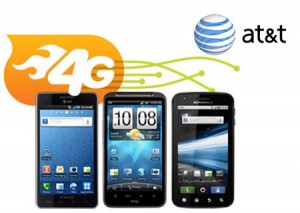
Last week, reporters toured the AT&T Foundry facility in Plano, Texas and conducted a group interview with Jon Summers, SVP of application and service infrastructure. During the tour, GigaOM was treated to a “real-world situation” demo of AT&T’s Long Term Evolution (LTE) network and was impressed with the results.
According to the GigaOM post: “The speeds provided on the download side were about 28.87 Mbps and were about 10.4 Mbps on the upload side. This compared to speeds of 3.77 on the download side and 1.21 Mbps on the upload for an iPhone that was capable of maxing out on AT&T’s 7.2 Mbps HSPA network. So it’s fast, but sharing those speeds with others on a cell tower will bring them down. For comparison, Verizon has promised customers speeds of 5-12 Mbps on the download side and speeds of up 5 Mbps on the upload side.”
Additionally, AT&T’s spectrum may increase as early as next year. In March, the company announced its plans to acquire T-Mobile for $39 billion ($25 billion in cash and the rest in stock). The deal is presently undergoing a regulatory-approval process. If approved, by next year AT&T could solidify its position as the largest carrier in the U.S. with about 130 million subscribers.
The merger would also help bolster AT&T’s ongoing growth. According to GigaOM, “In the last four quarters, it has reported $125 billion in revenue, and billions of dollars in capital investments in its network.”
Related New York Times article: “AT&T’s LTE 4G Speeds Could Blow Away Verizon” (5/20/11)
Related MobileBeat article: “AT&T to acquire T-Mobile for $39B” (3/20/11)
Related CNET article: “AT&T, T-Mobile customer satisfaction on the decline” (5/17/11)
By
Rob ScottApril 10, 2011
Michael White took over the reigns of DirecTV the beginning of this year as the new president and CEO. During a recent three-day retreat with senior executives, White outlined the company’s strengths and weaknesses, and shared his vision for future growth, especially in regards to possible expansion in Latin America and reaching out to customers who use mobile devices. Investor’s Business Daily reports that DirecTV “is the world’s largest pay TV services provider with more than 28 million subscribers in the U.S. and Latin America.”
White emphasized that DirecTV is in excellent shape, but that an effective strategic plan would help steer the company into the future. His immediate focus is on recent deals with AT&T and Verizon that allow DirecTV to sell broadband services over fiber networks, the next phase of DirecTV’s recently launched free iPad application, and expanding the number of customers in Latin America (currently at 9 million).
“I was convinced that Latin America was still the best growth opportunity, and we should really expand more aggressively in Latin America,” White said. “In the U.S., we had a terrific core business, but we needed to address the ‘anytime, anywhere’ TV evolution and we needed some other revenue growth opportunities to help drive the top line while we were wrestling with higher programming costs.”
DirecTV’s first iPad app has some interesting features, yet is somewhat limited in its functionality for those truly on-the-go. It can serve as a remote control to change channels, browse channels without interrupting what’s on TV at the time, record to a DVR, and create a home screen with access to favorite channels. Users can use the app outside the home to schedule programs, but cannot currently use it to view programming. This may be the biggest obstacle for mobile device enthusiasts. White explains that phase two will enable users to import DVR content that has already been recorded to the iPad for remote viewing.
White says that DirecTV’s strategy to increase market share in Latin America involves a segmented approach by focusing on the quality of HD and DVR offerings — in addition to offering lower-priced packages, specifically targeting the middle-class who have so far been reluctant to take the plunge with paid services.



